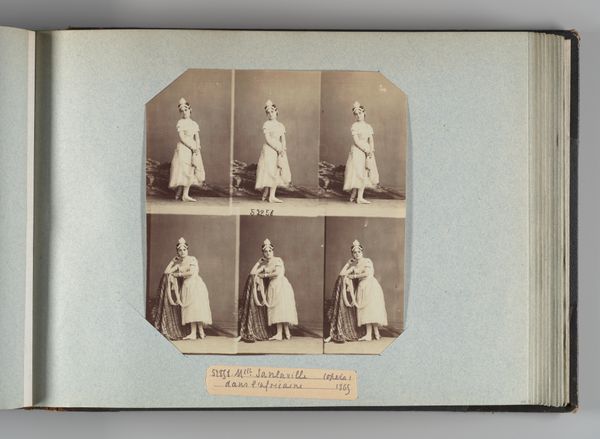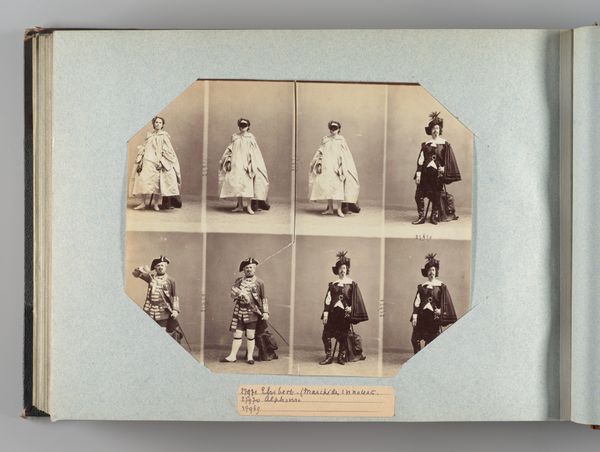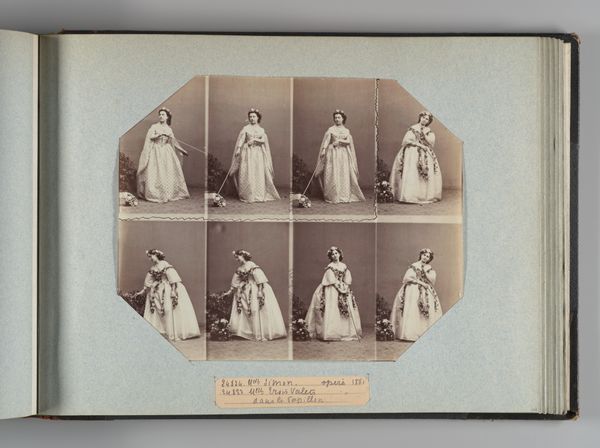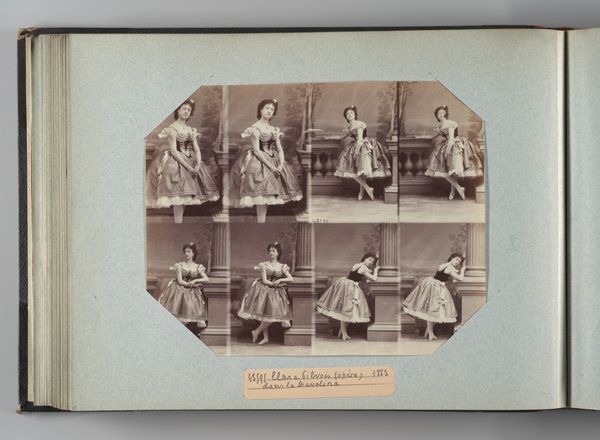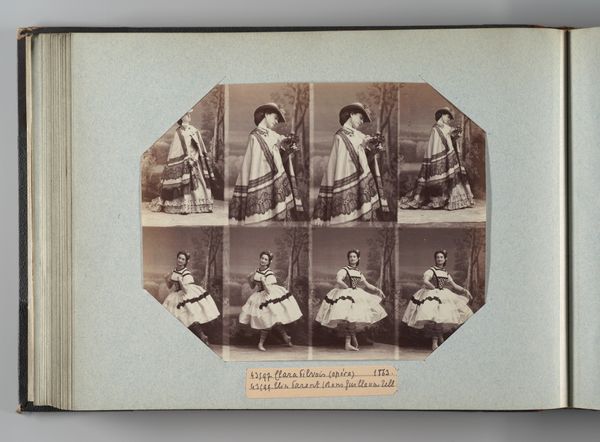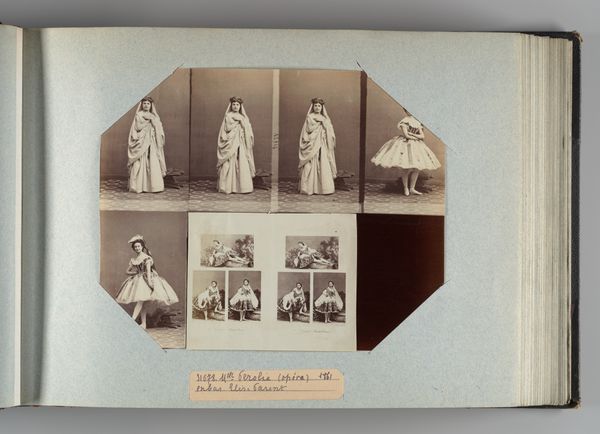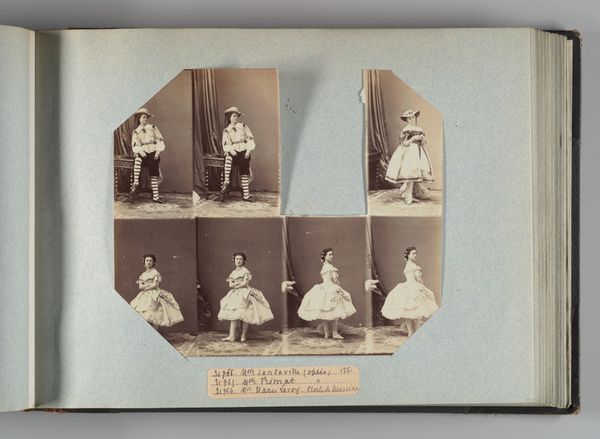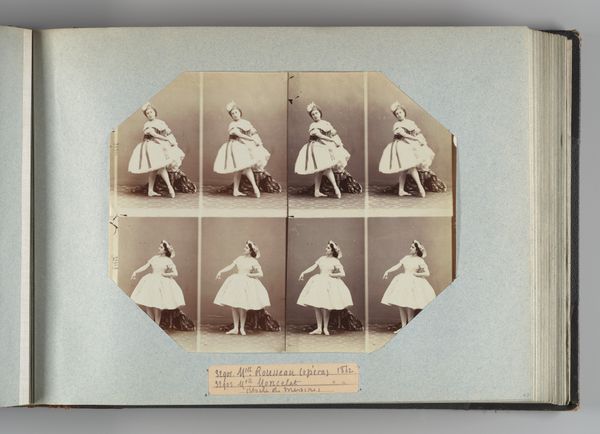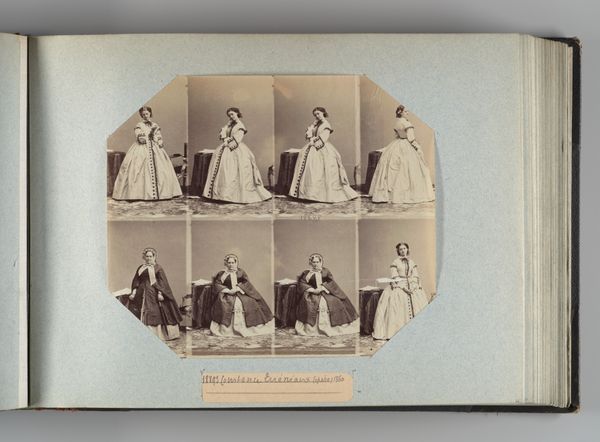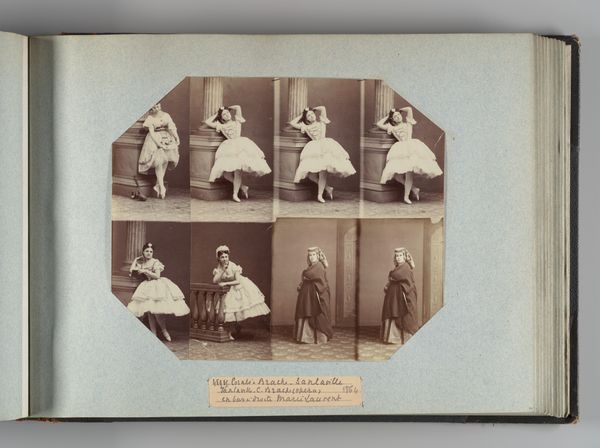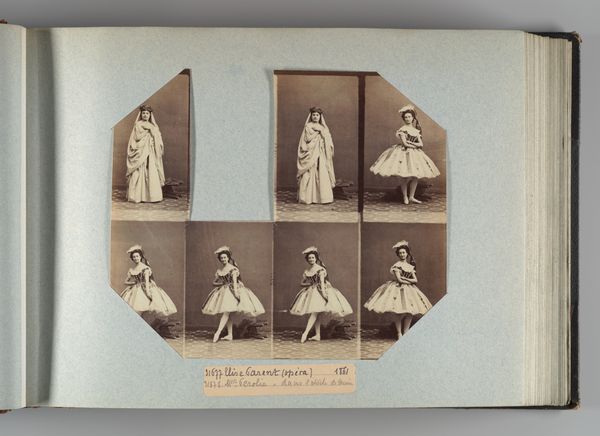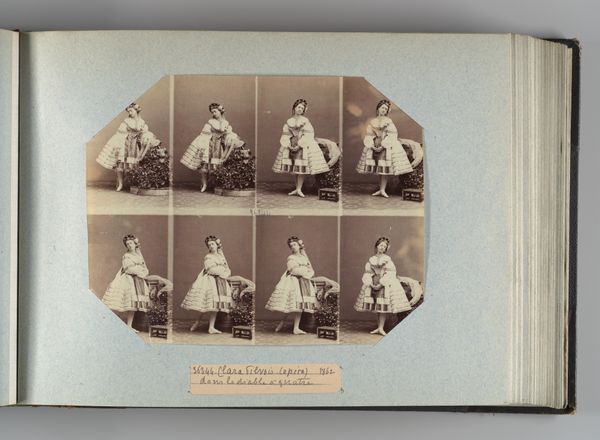![Mlle Thouvenot [?]; Mlle Vallier by André-Adolphe-Eugène Disdéri](/_next/image?url=https%3A%2F%2Fd2w8kbdekdi1gv.cloudfront.net%2FeyJidWNrZXQiOiAiYXJ0ZXJhLWltYWdlcy1idWNrZXQiLCAia2V5IjogImFydHdvcmtzLzJjY2ViYmVlLWE0ODMtNDg5Mi1hMmViLTEzNTAzNDFjNzk2MS8yY2NlYmJlZS1hNDgzLTQ4OTItYTJlYi0xMzUwMzQxYzc5NjFfZnVsbC5qcGciLCAiZWRpdHMiOiB7InJlc2l6ZSI6IHsid2lkdGgiOiAxOTIwLCAiaGVpZ2h0IjogMTkyMCwgImZpdCI6ICJpbnNpZGUifX19&w=3840&q=75)
print, photography
#
portrait
# print
#
photography
Dimensions: Image: 7 3/8 × 9 1/4 in. (18.8 × 23.5 cm) Album page: 10 3/8 × 13 3/4 in. (26.3 × 35 cm)
Copyright: Public Domain
Curator: Here we have a series of photographic prints from 1865 by André-Adolphe-Eugène Disdéri. They're titled "Mlle Thouvenot [?]; Mlle Vallier". I find the layout of this album page really interesting. Editor: My eye is immediately drawn to the distinct contrast between the upper and lower registers. The ethereal, almost spectral figures in white above clash dramatically with the earthier, more grounded presence of the figures in detailed folk costumes below. It makes you wonder about labor of making these materials and wearing these different garments. Curator: Indeed. Disdéri, a pioneer of the carte-de-visite, was really at the intersection of art, technology, and commercial enterprise, mass producing portraits in a way never before seen. Looking at this album page through a feminist lens, the costuming becomes even more potent. Editor: Agreed. Thinking materially, each layer of fabric tells a story. The elaborate construction of both sets of garments shown suggests distinct modes of production and different economies informing the creation and display of the costume as both artistic representation and functional garment. The carte-de-visite facilitated the accessibility to representation; who did this access include and exclude? Curator: Exactly. Were the subjects employees, contracted performers, or women otherwise at Disdéri’s disposal for labor? It is critical that we look at who has the access to this image making machinery as well. The question remains, what sort of power structures influenced both their representation, and their relationship to labor? Editor: These questions linger. And beyond just posing for the portraits themselves, one must consider who would own the images or possess them. What sort of performative acts were enacted? Curator: Absolutely. It allows us to speculate as to their class and profession during a rapidly industrializing Europe, while providing greater visibility for these subjects of popular opera. By carefully investigating those factors, one may understand broader shifts occurring in their society through this artwork and photography. Editor: Yes. Examining the textiles and means of photographic production opens doors for investigating class and power relationships. Acknowledging Disdéri’s practices with this photographic medium and the subjects’ relation to textile economy is central to my experience with this artwork. Curator: This image asks important questions about representation and social structures. I appreciate how thinking about it through the lens of labor invites questions on material processes. Editor: Likewise. Investigating the context of textile processes along with the production, reproduction, and consumption of images, the images pose more intriguing questions about artistic endeavors in 1865.
Comments
No comments
Be the first to comment and join the conversation on the ultimate creative platform.
